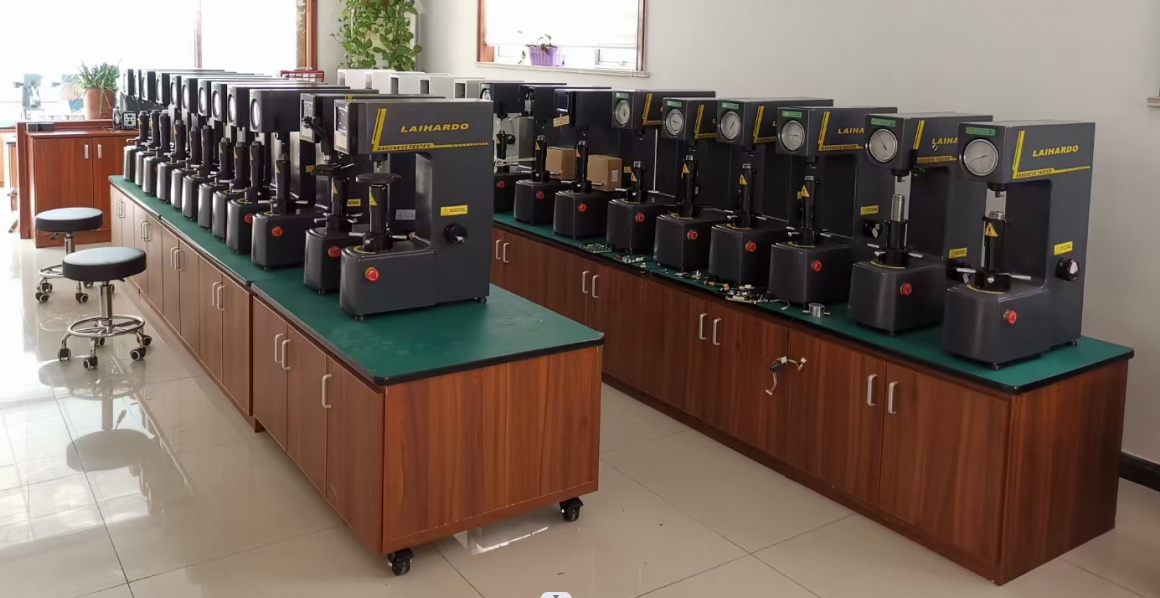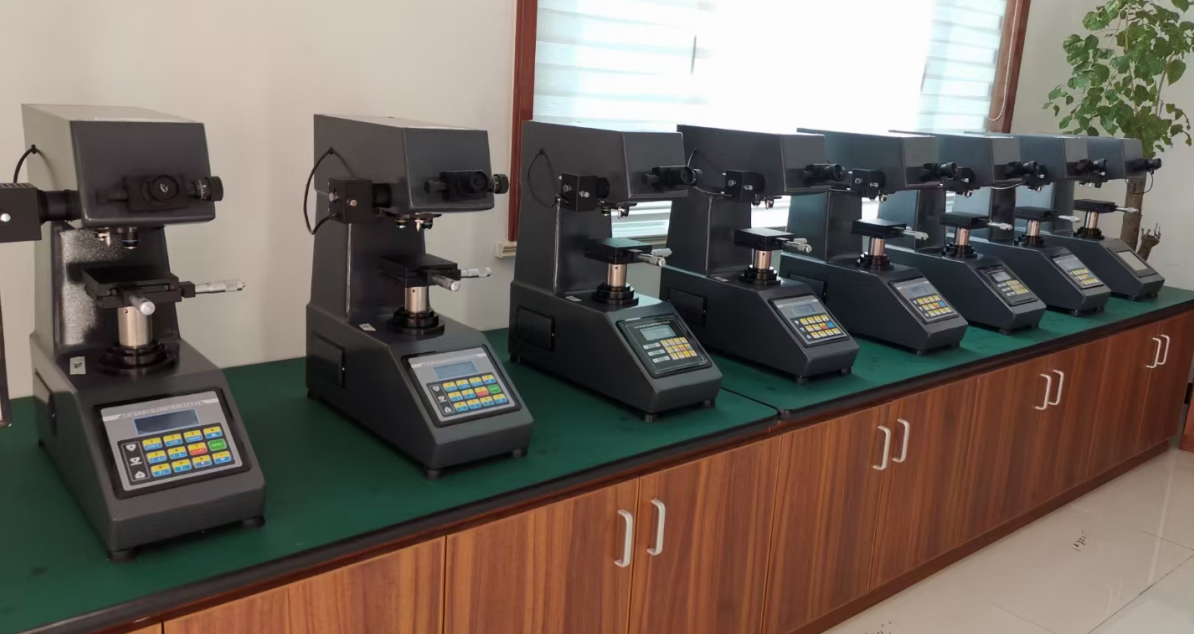Surface heat treatment is divided into two categories: one is surface quenching and tempering heat treatment, and the other is chemical heat treatment. The hardness testing method is as follows:
1. surface quenching and tempering heat treatment
Surface quenching and tempering heat treatment is usually carried out by induction heating or flame heating. The main technical parameters are surface hardness, local hardness and effective hardened layer depth. Vickers hardness tester or Rockwell hardness tester can be used for hardness testing. Experimental force The selection is related to the depth of the effective hardened layer and the surface hardness of the workpiece. There are three hardness machines involved here.
(1) The Vickers hardness tester is an important means to test the surface hardness of heat-treated workpieces. It can use an experimental force of 0.5-100KG to test the surface hardening layer as thin as 0.05mm thick. Its accuracy is high and it can distinguish the heat-treated workpieces. The slight difference in surface hardness, in addition, the depth of the effective hardened layer is also detected by the Vickers hardness tester, so it is necessary to equip a Vickers hardness tester for units that carry out surface heat treatment processing or use a large number of surface heat treatment workpieces.
(2) The surface Rockwell hardness tester is also very suitable for testing the hardness of the surface quenched workpiece. There are three scales for the surface Rockwell hardness tester to choose from. It can test various surface hardened workpieces whose effective hardened layer depth exceeds 0.1mm. Although the accuracy of the surface Rockwell hardness tester is not as high as that of the Vickers hardness tester, it can already meet the requirements as a detection method for quality management and qualification inspection of heat treatment plants. .Besides, it also has the characteristics of simple operation, convenient use, low price, rapid measurement, and direct reading of hardness values. The surface Rockwell hardness tester can be used to quickly and non-destructively detect batches of surface heat-treated workpieces one by one. It is of great significance to metal processing and machinery manufacturing factories. When the surface heat treatment hardened layer is thick, the Rockwell hardness tester can also be used. When the heat treatment hardness layer thickness is 0.4-0.8mm, the HRA scale can be used. When the hardened layer depth When it exceeds 0.8mm, the HRC scale can be used. Vickers, Rockwell and superficial Rockwell three hardness standard values can be easily converted into each other, converted into standards, drawings or hardness values required by users, and the corresponding conversion table is in the international standard ISO. The American standard ASTM and the Chinese standard GB/T have been given.
(3) When the thickness of the heat-treated hardened layer is more than 0.2mm, a Leeb hardness tester can be used, but a C-type sensor needs to be selected. When measuring, attention should be paid to the surface finish and the overall thickness of the workpiece. This measurement method does not have Vickers and Rockwell The hardness tester is accurate, but it is suitable for on-site measurement in the factory.
2. chemical heat treatment
Chemical heat treatment is to infiltrate the surface of the workpiece with atoms of one or several chemical elements, thereby changing the chemical composition, structure and performance of the surface of the workpiece. After quenching and low temperature tempering, the surface of the workpiece has high hardness and wear resistance. and contact fatigue strength, and the core of the workpiece has high strength and toughness. The main technical parameters of the chemical heat treatment workpiece are the depth of the hardened layer and the surface hardness. The distance at which the hardness drops to 50HRC is the effective hardened layer depth. The surface hardness test of chemical heat treated workpieces is similar to the hardness test of surface quenched heat treated workpieces. Vickers hardness testers, surface Rockwell hardness testers or Rockwell hardness testers can be used. Hardness tester to detect, only the thickness of nitriding thicker is thinner, generally not more than 0.7mm, then the Rockwell hardness tester cannot be used
3. local heat treatment
If local heat treatment parts require high local hardness, local quenching heat treatment can be carried out by means of induction heating, etc. Such parts usually need to mark the position of local quenching heat treatment and local hardness value on the drawing, and the hardness test of parts should be carried out in the designated area , the hardness testing instrument can use a Rockwell hardness tester to test the HRC hardness value. If the heat treatment hardened layer is shallow, a surface Rockwell hardness tester can be used to test the HRN hardness value.
Post time: Feb-22-2023




